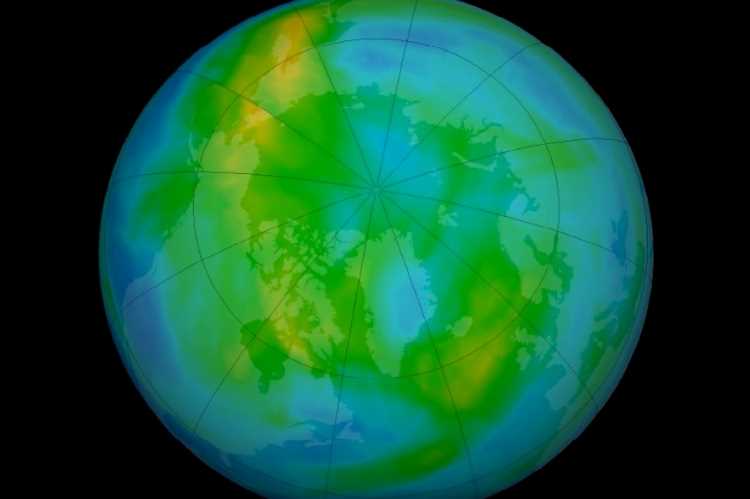
A large ozone hole that is three times the size of Greenland has opened above the Arctic, at a time when the scientific community is celebrating the healing of a similar hole in the southern hemisphere.
The hole that rivals the Antarctic one in size is the biggest till date in the northern hemisphere, with worryingly low ozone levels being observed across most of the central Arctic, scientific journal Nature reports. The extraordinary atmospheric phenomenon is no direct threat to human health. The article says the hole will probably disappear in the coming weeks as the temperatures rise.
Nature quotes Martin Dameris, an atmospheric scientist at the German Aerospace Centre in Oberpfaffenhofen, as saying that this is the first real ozone hole above the Arctic.
READ: Earth’s ozone layer is healing due to human action, says study
The ozone layer forms a protective cover about 10-50 kilometres above earth and shields the planet from the dangerous solar ultraviolet radiation. It acts like a sunscreen, stopping ultraviolet rays that cause skin cancer and cataracts in humans and damage plant life.
The Antarctic ozone hole opens late winter when Sun’s rays start ozone-depleting reactions involving chlorine and bromine emissions from industrial activity. The chemical reactions on the surfaces of cloud particles lead to the destruction of ozone molecules. Such conditions rarely occur in the Arctic that experiences varying temperatures.
READ: Climate change will destroy half of world’s beaches, says report
Powerful westerly winds blew around the North Pole this year, trapping cold air in a polar vortex, says Nature. Many scientists attribute this phenomenon to rising global temperatures due to climate change. There was more cold air this winter than recorded since 1979, it quotes Markus Rex, an atmospheric scientist, as saying. The weather balloons observed a 90% drop in ozone in late March at 18 kilometres altitude. The Arctic region had witnessed ozone depletion also in 1997 and 2011, but this year’s hole may surpass those records.
The hole is not a threat to humans yet, but it may drift to populated areas. In that case people may need to take precaution to avoid sunburn. The ozone layer could start to heal as temperatures rise in the coming weeks.
The ozone layer above the southern hemisphere has been showing a healing tend, thanks to the ban on certain chemicals under a 1987 agreement. The Montreal Protocol was signed in 1987 to protect the ozone layer by ending the production of ozone-depleting chemicals. The treaty had revisions in 1990, 1991, 1992, 1993, 1995, 1997, 1998, 1999, and 2016.
Sajna Nair is a former banker. Her areas of interest are environment, art and culture.

